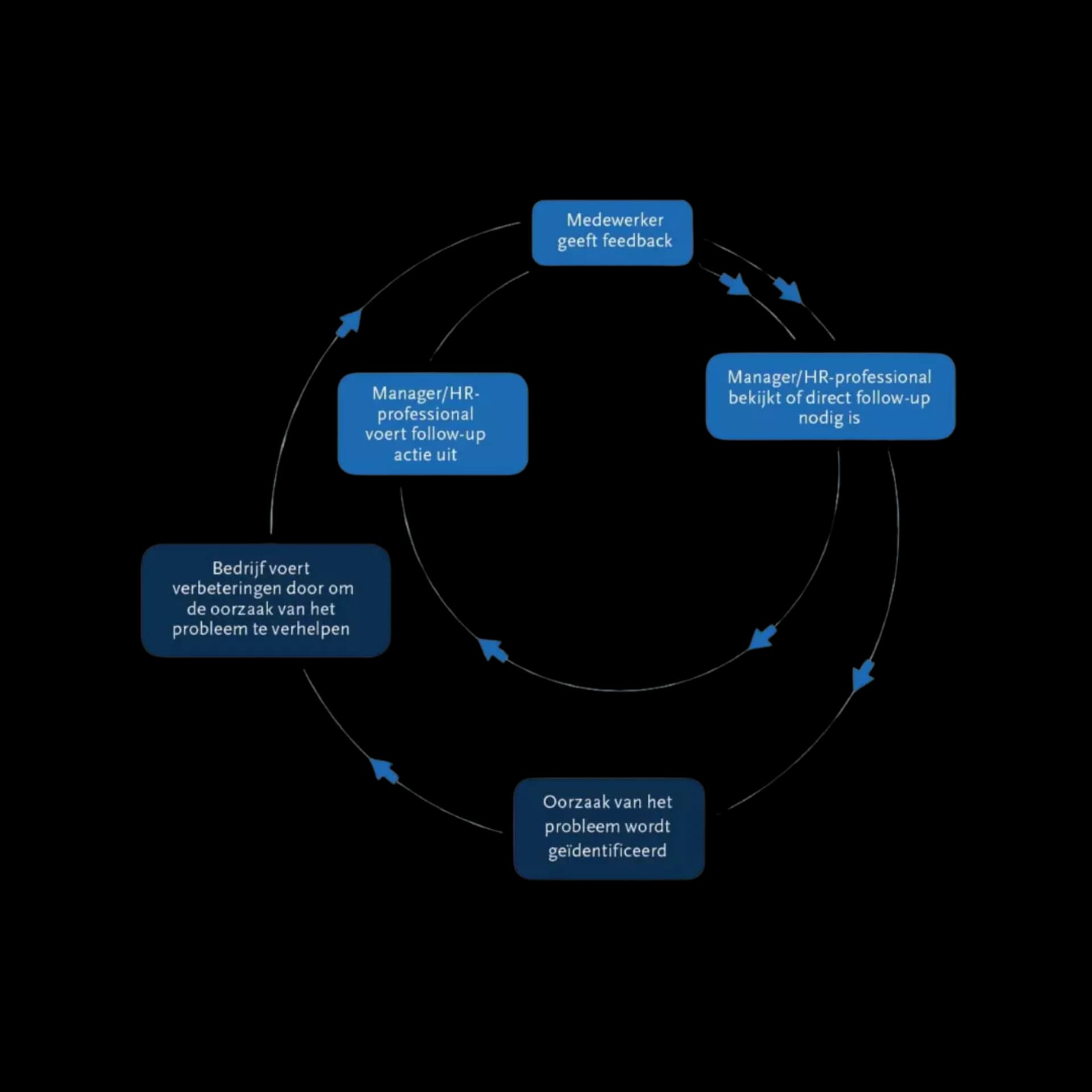The voice of the employee: How to listen to your employees
In the marketing world, actively listening to customers to meet their needs has become standard practice. Irma Doze, co-author of the book 'HR-analytics', now sees the same trend emerging among employees. But how do you actively listen to your employees, and why is it valuable?

When the use of data emerged in the marketing world, we first focused on analytics and algorithms. We made predictions based on correlation, for example the correlation between buying a cookbook and baking accessories. If a Bol.com customer buys one, he is also offered the other. Interesting, but we have also gone back to human insights: really listening to the customer, so that you know what he is experiencing, and you can touch him. We call this researching the 'customer experience' and generating 'customer insights'. And thereby create a brand that appeals to the heart. For example, Calvé, with their iconic advertising expressions (including the young version of Lieke van Lexmond), which respond to our nostalgia: 'who didn't grow up with it?'
Now we see the same trend among employees. First, employers focused on the figures, for example making predictions based on the correlation between absenteeism and the time that someone works in their job. Now there is more and more room for the other side, gaining insight into your employees. Really trying to understand and fathom what employees consciously or unconsciously experience in your organization. So, research the employee experience and collect employee insights. Why? Very simply, because our choices are generally not rational. Emotion plays a major role in our choice process.
Monitoring
To get an understanding of how your employees are doing, you need to monitor them. Perhaps you're thinking of an employee survey, the kind many organizations conduct once every two years to measure employee satisfaction. Often, these surveys are so extensive that employees become overwhelmed
However, this isn't enough to track their well-being, especially in today's fast-paced environment. Just as checking your car's fuel level only once every two years can lead to problems, even a quarterly pulse survey isn't sufficient. Developments are happening rapidly, leading to continuous changes in work and working conditions, and employee sentiment can shift rapidly
It's much more important to actively listen to your employees, preferably on a weekly or even daily basis, similar to how you would listen to your customers. Keep a regular pulse on how your employees are feeling, especially in today's climate. This fosters genuine connection with your employees and allows you to provide them with the right resources to optimize their job satisfaction and performance. If something isn't right, you'll be alerted immediately.
How to listen actively?
Just as we collect feedback from customers through emails, calls to customer service, online reviews, and website feedback, you can gather feedback from your employees in similar ways. You can actively collect feedback by asking employees one-on-one about their thoughts on various aspects of their work environment. Alternatively, you could ask your employees the same (short) questions regularly, perhaps every week. An example of this is the five-question COVID check-in that we see more often now.
But ideally, you want to minimize the burden on your employees. You can achieve this by passively collecting feedback. Listen to what your employees spontaneously say during your daily, weekly, or monthly meetings, coaching sessions, or team meetings. Monitor the messages your employees post on the intranet or internet and what they report (anonymously) to a confidential advisor. With text mining, it's even possible to extract sentiment from an employee's email traffic. While this may sound like an invasion of privacy, it's done even more anonymously than an employee survey.
You can also encourage feedback. Provide your employees with an outlet, such as a suggestion box or a feature on your intranet where they can give spontaneous (and possibly anonymous) feedback. You can also ask employees to join a research panel, an employee community, where they can share ideas and feedback.
Closed loop
Ensure that you not only listen to feedback but also record it. This is where you derive insights from. Initially, you solve a problem for the person who provided the feedback. If someone complains about their office chair, you adjust it or perhaps even order a special chair for that employee.

Subsequently, you combine the data you have collected across the organization. Do you see certain issues recurring? Are more people complaining about work hours, coffee quality, or office chairs? Then, you investigate the underlying cause. Are the chairs properly adjusted for the employees? Or do you need to find a different supplier? This is what we call the closed loop
It may be that you can solve the problem immediately, for example, by purchasing new chairs or switching to a different brand of coffee. This sounds simple, but it's these small surprises that can have a big impact. Regular small improvements can have a greater effect on your employees than occasional major changes.
You may also need further investigation. This is where we distinguish between strategic, tactical, and operational research.
Strategic research
If you receive signals through monitoring, for example, about stress, you can start a targeted study addressing a specific theme, such as workplace stress. You can use traditional employee survey methods for this. However, you don't repeat the same survey every year. Instead, you focus the survey on the specific theme you're investigating that year. Of course, you can also conduct the survey within your employee community.
Tactical research
Perhaps you receive signals during monitoring that a specific process within your organization isn't working smoothly, such as the onboarding process. In that case, you conduct process research or process mining. You want to know how the first 100 days of the onboarding process are going. In this case, you don't ask all your employees about their experiences with that process. You only survey the employees who are currently in that situation or have just completed it.
People have bad memory. It is mainly the most recent and most extreme experiences (both very good and very bad) that stick around in the long term. You have to take this into account when you ask people about their experience. If you ask a week or a month too late, that extreme exception may prevail and you will not measure the real (recent) experience.
Operational research
If there's a problem within a defined process, such as between a manager and their team or communication between departments, opt for dialogue. This could involve a focus group, a workshop, a digital brainstorming session with involved individuals (possibly anonymously), or an online discussion via your employee community.
These types of research are valuable, but what's also important is that they bring us closer to our employees. We're actively listening to them more than ever before. Perhaps this will lead us to an organizational culture where employees and managers prioritize taking the time to truly understand each other.
Related insights

